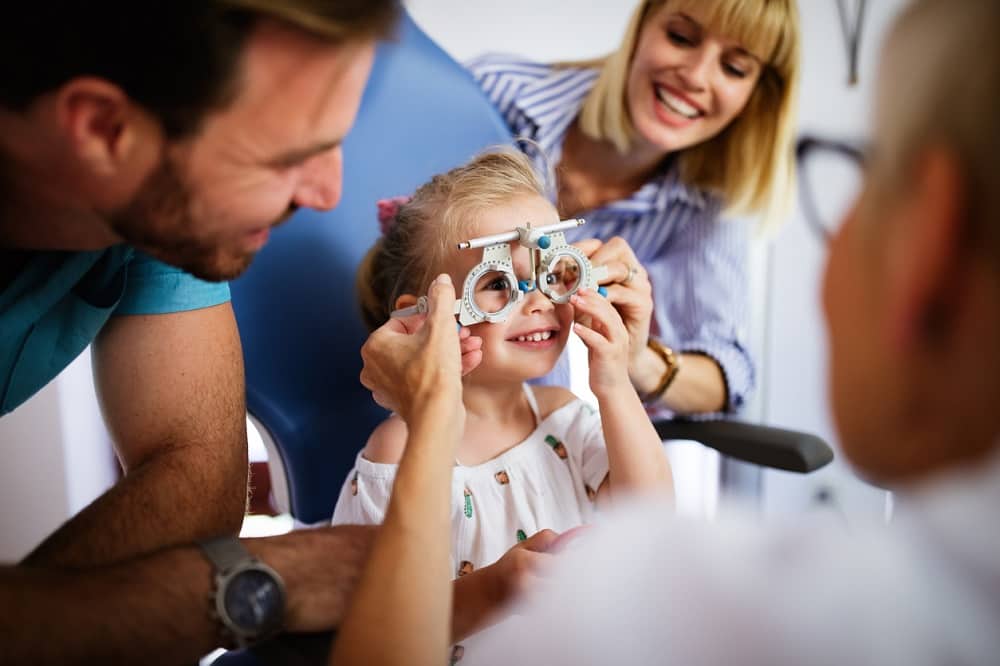Health
The Ultimate Guide to Minimizing Neck Pain Caused by Office Work

These days, just about everyone spends a significant portion of their workday sitting at a desk.
Spending hours at a time hunched over a computer or other device is terrible for your neck — that’s why nearly 50 percent of office workers have reported experiencing neck pain at some point during a 12-month period.
Most people are aware that their desk job is bad for their neck, but they don’t know what to do to fix it. For most of us, quitting our office jobs and embarking on a new, less posture-killing career path simply isn’t an option.
So, what do you do if you work a desk job but are tired of dealing with a sore, achy neck? For starters, you can give these tips a try.
Adjust Your Computer Monitor
One of the first things you can do to relieve neck strain is to adjust your computer monitor. Make sure it’s positioned directly in front of you and is raised to eye-level. If you have to look down to see your computer screen, the monitor’s too low.
While you’re adjusting your monitor, you should also take a look at the settings on your screen to make sure it’s bright enough. If you find yourself leaning in to read text on your screen regularly, you may also want to adjust the settings to increase the font size and make it easier to see.
Adjust Your Desk
In addition to changing the orientation of your computer monitor, you may also want to adjust your desk to make it a bit more ergonomic.
Make sure your work surface is high enough that you can naturally type while keeping your wrists neutral and forearms parallel with the floor.
Your desk should also be deep enough that you can slide your monitor back at least twenty inches away from your eyes.
Must Read: How To Burn Unwanted Calories At Your Desk Job
Get a Better Office Chair
A high-quality office chair is another important upgrade you might want to make to your workstation. You office chair should have a full back the reaches all the way to your shoulders (or higher). This will give you the support you need to avoid slouching forward.
Make sure the chair also comes with good lumbar support to help you maintain a neutral spinal curve.
Finally, make sure all aspects of the chair are adjustable. That way, you can raise or lower the seat and armrests to fit your body specifically.
Use a Phone Headset
If you have to talk on the phone regularly as part of your job, consider investing in a headset. That way, you don’t have to tilt your head to hold the phone in place while you type. Over time, this puts a lot of strain on your neck muscles and increases the risk of experiencing neck pain.
Do Some Desk Stretches
Research shows that regular stretches is better for minimizing neck pain than using anti-inflammatory drugs (both over-the-counter and prescription). Not only is stretching free, but you also get to avoid the potential negative side effects that come with using anti-inflammatory drugs.
The following are two good stretches to do while sit at your desk:
- Chin tucks — Push your head forward and stick your chin out, then pull your head back and tuck your chin in (while keeping your neck straight), as though you’re trying to make a double chin
- Side stretches — Tilt your right ear toward your right shoulder while extending your left arm down and out to the side. Hold for 30-60 seconds before switching sides.
Do these exercises every hour to keep your neck muscles nice and loose.
Don’t Use Your Cell Phone to Check Emails
Thanks to smartphones, it’s easy for coworkers and clients to get a hold of us at all hours of the day. This means we often end up spending more time than is ideal bent over our phones checking emails.
To minimize neck pain caused by staring down at your phone, set a rule saying you can only check emails on your office computer. If someone really needs to talk to you, they can call you. Otherwise, it can wait until you get back to your desk.
Stand Up
If your office will allow it, consider swapping out your regular desk for a standing desk. As long as its height can be properly adjusted, this can significantly minimize neck pain.
If you use a standing desk, make sure you’re still working on improving your posture. A standing desk won’t do you any good if you’re still slouching over it.
In addition to adjusting the height, make sure you’re standing with feet shoulder-width apart and your trunk upright. Your neck should be directly over your spine and your head should be directly over your neck. Avoid leaning forward over your desk if you get tired — instead, lean back against a stool (there are many that are sold with standing desks) to take a break without undoing all your hard work.
Work with a Professional
No matter how much work they do to try and upgrade your workspace, some people still struggle with job-related neck pain.
If this is the case for you, you may need to work with a professional to solve your neck issues for good. This is especially true if you’re dealing with a serious neck condition like limited range of motion, numbness, or severe headaches.
A chiropractor or physical therapist will be able to work with you to put together a plan to fix these issues once and for all.
Final Thoughts
Neck pain is a common side effect of working in an office. But, it’s definitely not inevitable. There are lots of things you can do to minimize neck pain caused by your desk job, starting with the suggestions listed above.
Author Bio: Natalie Thongrit is a freelance writer who focuses primarily on fitness, health, and wellness-related content. You can connect with her on Twitter or LinkedIn, or check out her portfolio to read more of her work.
Health
Unveiling the Benefits of Early Detection in Skin Cancer Treatment

Many skin cancers can be cured by finding and treating them when small. But, to find them, people must understand what to look for and regularly perform self-skin exams at home and with a dermatologist.
These exams rely on biopsy procedures that remove questionable skin tissue and check it under a microscope for cancer cells. Learn more about these biopsy procedures and their importance in diagnosing skin cancer.
Less Invasive Treatments
The cancer cells that cause skin cancer grow in the outer layer of your skin. These cells are visible to the naked eye, so skin exams at home and in a doctor’s office are important for catching them early.
Most basal and squamous cell carcinomas are small enough to be surgically removed with a local anesthetic. Other skin cancer treatment Memphis may be needed if the cancer has spread (metastasized) from the original lesion.
These may include radiation therapy or immunotherapy, which helps your immune system fight cancer. Adding these to surgery decreases the chance of the cancer returning or spreading to other areas of your body.
Some cancers, such as melanoma, maybe too far advanced to treat by surgery alone. In this case, the doctor may want to observe and monitor the tumor closely over time. This is called palliative care. A doctor may also use other tests, such as imaging or lymph node biopsies, to determine if the cancer has spread.
Better Cure Rates
Many skin cancers that develop inside the body are often curable if detected and treated early. The best way to do this is by recognizing and monitoring changing blemishes, including those that are itchy or bumpy, bleed easily, ooze, or change in color or shape.
People should learn to examine their skin daily. Basal cell carcinomas (BCCs) and squamous cell carcinomas (SCCs) are the most common skin cancers. They grow slowly and can be cured by surgery. But if left untreated, they can spread to other body parts and become disfiguring or fatal.
OHSU researchers are working to improve melanoma detection by introducing regular targeted skin examinations with trained primary care providers (PCPs). A cost-effectiveness analysis has shown that, compared to primary prevention, a targeted screening program will result in 2419 fewer melanomas and 567 fewer melanoma deaths for every 100 000 individuals, plus 2.46 million quality-adjusted life years saved and savings of PS406.1 million.
Less Disfigurement
Most basal and squamous skin cancers, even the most serious types like melanoma, are curable. These are often easily treatable if they’re caught early on when they’re small and localized.
Regular self-examinations of the skin—particularly on areas of the body that are difficult to see, such as the backs of the legs and arms—can help detect changes in spots or freckles that could signal a cancerous change. When checking these hard-to-see places, asking a partner or friend to assist you is good.
New noninvasive imaging tools also help. For example, doctors can use a scanner to create a 3-D image of the patient’s entire body, which allows them to quickly and accurately find problem lesions. They can also look at lymph nodes to see if the cancer has spread. These are known as staging tests.
Fewer Side Effects
Most skin cancers are easily cured when they’re caught early. But they can also become disfiguring if they’re left to grow. And some can spread to other parts of the body and kill.
Because they’re visible, spotting them is easy with regular self-examination and visits to the dermatologist for a professional evaluation. Look for any mole or blemish that has changed in size, color, or texture or has an unusual growth pattern.
The new tool enables a cellular-level skin examination without needing a biopsy. It’s called reflection confocal microscopy (RCM) and is used in various clinical trials, including in combination with digital photography, to help avoid unnecessary excisions.
Health
5 Advantages of Family Eye Care Services

Visiting your family doctor is integral to overall health care and provides an excellent opportunity to reinforce healthy habits like eating a balanced diet and exercising. It’s also an excellent way to detect eye problems early, especially in children.
Improved Self-Esteem
Having a healthy vision can improve your family’s self-esteem. For children, it means they can see well enough to read books and participate in extracurricular activities. It also allows them to be more confident on the field or at school and can make a huge difference in their happiness. Similarly, adults with problems with their vision may have trouble functioning at work or home and can experience a drop in self-esteem. Annual eye exams can help your entire family feel better about themselves and their health. Finding a family eye care Harrisburg provider who can accommodate your whole family’s needs is essential. Look for a provider who welcomes kids, has extensive experience working with kids, and takes the time to educate them about their eye health and vision.
Improved Eye Health
Taking care of your family’s eyesight is essential for their overall well-being. Regular eye exams can help detect health issues like diabetes and high blood pressure, which can lead to eye disease. It also allows for the opportunity to make lifestyle changes, like incorporating eye-friendly nutrients such as Vitamin E into their diet. Moreover, visiting the family eye doctor regularly can encourage the household to adopt healthy habits like regular exercise, wearing sunglasses, and smoking less. This can help prevent common health conditions, including eye diseases and vision problems. By prioritizing family eye care services, your family can enjoy a life of good vision, participate in recreational activities, and boost their confidence.
Detecting Eye Problems Early
When juggling work, appointments, and children’s schedules, a routine eye exam can be the last thing on your mind. But if you wait until it’s too late, you could be putting yourself at risk of eye health and vision problems. Regular eye exams can help you and your family maintain good eyesight. They also give doctors a window into your overall health, detecting early signs of serious diseases such as diabetes and high blood pressure. Eye exams can also reveal several other health issues, such as melanoma (dark spots on the eye), leukemia, and even a brain tumor.
Vision Therapy for Children
Vision therapy is similar to physical therapy, and it can strengthen the connection between your child’s eyes and brain. It can also alleviate digital eye strain symptoms such as dry eyes and headaches and help your child read more quickly and write legibly. Kids with poor visual skills can struggle academically. They may rush through assignments to avoid blurry or double vision, which can lead to careless mistakes. Getting a functional vision exam with an experienced children’s optometrist specializing in vision therapy can help.
Identifying Inherited Diseases
Inherited eye diseases like Stargardt, retinitis pigmentosa, and Usher syndrome are caused by defects (mutations) in one or more genes. Genetic testing can identify these genes and help doctors confirm or refine a diagnosis. It can also guide the testing of family members and help them understand their risk of developing the disease. It also enables them to qualify for clinical trials and informs them about which future therapies might benefit them. Aside from refractive errors such as nearsightedness and farsightedness, many other eye conditions and diseases are hereditary. It is, therefore, essential to know your family’s eye health history and share this information with your optometrist. This knowledge can protect your vision and prevent eye diseases before they cause significant damage.
Health
Ways How to Slow Down Biological Aging

Biological age varies from chronological age in that it considers aspects such as your health, lifestyle choices, and other considerations.
It can provide a more accurate picture of your health and risk for diseases that can shorten your lifespan.
These measures and determining how to slow down biological aging can help you decide what lifestyle changes to make now to lower your risk and increase your life expectancy.
Spend Time With People You Love
Getting in touch with your family members and spending quality time together is a great way to slow biological aging. It allows you to connect with your true self and share your emotions. Spending time with your loved ones can also help you to fulfill your emotional needs and create a strong foundation for your mental health.
Studies have shown that people close to their families have higher levels of happiness than those who aren’t. It is because they have a strong sense of belonging and a positive environment where they feel safe.
The best part about spending time with your family is that it can help you to express yourself without worrying about what others may think of you.
There are many ways that you can spend quality time with your family members, including planning a trip or discovering a new hobby together. You can also have conversations about any topic you both enjoy and are passionate about.
Aside from that, spending quality time with your family also gives you a chance to create lifelong memories that you will cherish forever. It can be anything from sharing your favorite foods or activities to discovering a new place you want to explore.
Ground Yourself Through Your Senses
Grounding yourself through your senses is one of the most effective ways to slow biological aging. It can be as simple as listening to nature, noticing the details of a sunset, or taking in the sights of a new city.
Using all five senses can help you focus on the moment, making you feel calmer and more relaxed. Practicing these skills can also be helpful when you are dealing with emotional issues like anxiety, depression, or PTSD.
The most common sense-based grounding exercises are usually quick and easy to follow. These strategies may be as small as taking three deep belly breaths, or they can be more involved, like meditation or yoga. Of course, there is no right or wrong method to ground oneself; nonetheless, it may take a few tries to find a method that works for you.
For example, the most apparent sense-based activity is focusing on your sight. Still, it can also be as simple as recognizing a landmark in your local area or attempting to name one of the many colorful flakes in your glass of water.
While these strategies are not meant to replace therapy, they can be a good start in learning how to manage your emotions and stress healthily. Trying out a few different methods can help you discover the most effective ones for you and your family.
Get Rid of Anything That Doesn’t Add Value to Your Life
The right tools and techniques can help you slow down the aging process. Among the easiest ways to accomplish this is to get rid of anything that does not offer value to your life.
There are many ways to go about identifying what you no longer need. First, look closely at your closet and garage, and eliminate the items you no longer wear or use.
Another way to clear the clutter is donating or selling the items you no longer need. It might be a terrific opportunity to earn additional money while also giving back to your community. Taking the time to do this will be well worth your while! Then, you can focus on the items that add value to your life. It is the first step in achieving your goal of feeling happier, healthier, and more contented. You’ll be astonished at how much more you enjoy your daily activities.
Take Time for Self Care
In our busy lives, self-care can sometimes seem like a luxury we must put on the back burner. But in fact, taking time to care for yourself can be crucial to keeping your life running smoothly and avoiding stressors that can lead to burnout and depression.
You’ll be able to manage your stress levels more efficiently, which will help you slow biological aging. Research has shown that when you take care of yourself, your body responds to stress by entering a parasympathetic (rest and digest) state rather than a sympathetic (fight or flight) one.
This soothing response improves your sleep, lowering your risk of heart disease and high blood pressure and slowing reaction times and irritation. It also increases your energy level, making it easier to get the tasks you need to complete done.
Even if you have a stressful job or family commitments, it’s essential to ensure you get enough rest and that your nutritional needs are met. Having a regular nightly bedtime can be a helpful way to ensure you get the sleep you need.
Having time to do things you enjoy, whether gardening, reading, going out for drinks, or just sitting in your favorite spot outside, will give you a sense of peace that can help you recharge. It will also allow you to reflect on the good times in your life, which can help you cope with the bad and prevent burnout.








